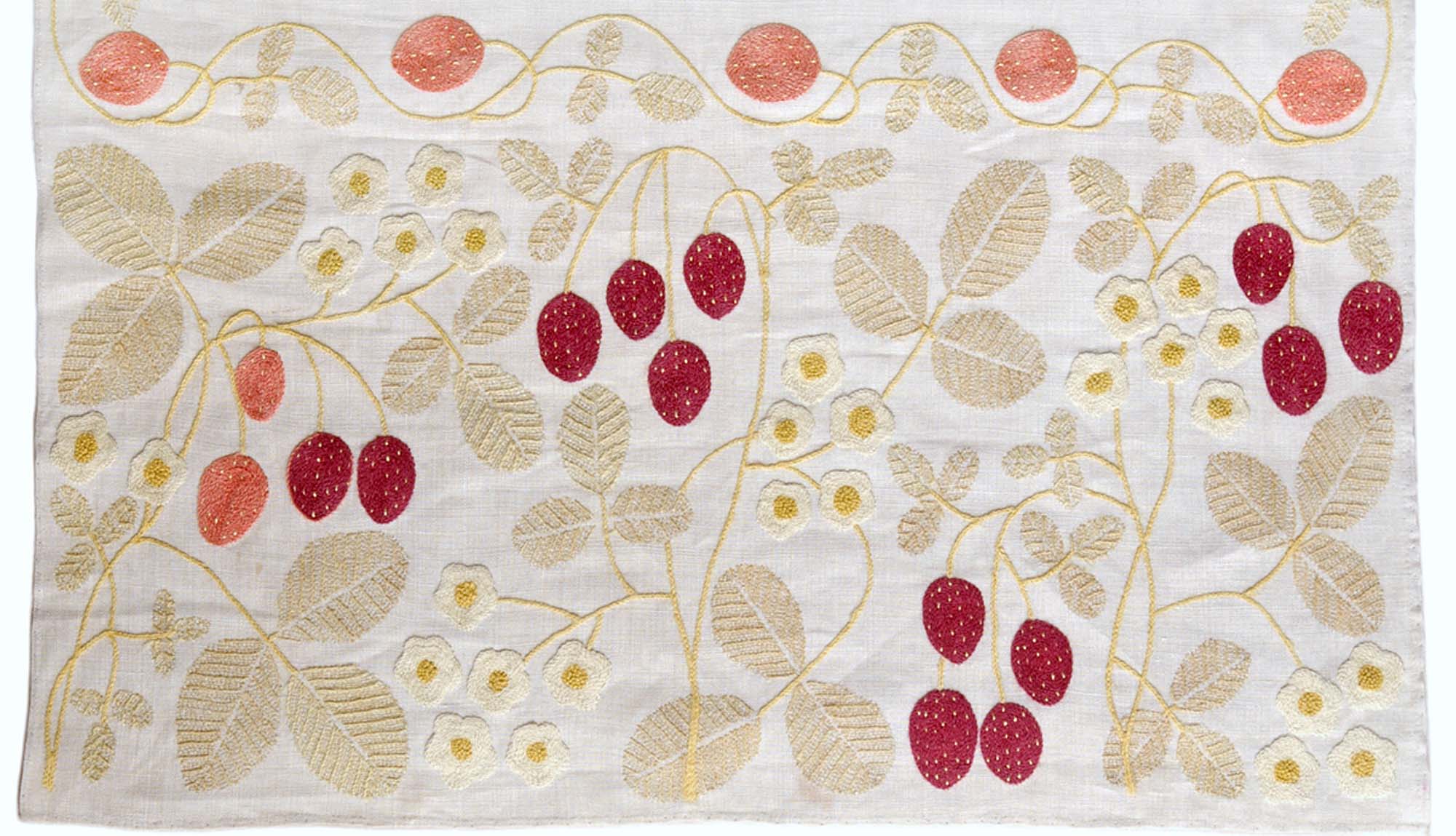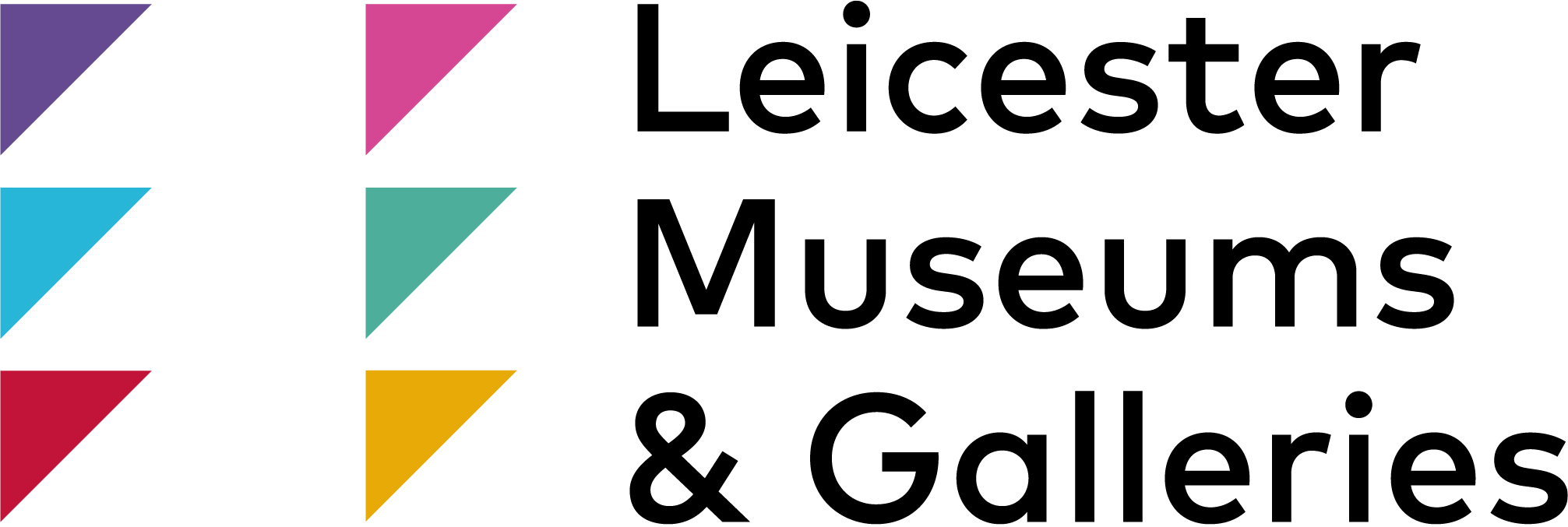LGBTQ+ Collections Interpretations
Published: 13 February 2023
In late 2022 Leicester Museum & Art Gallery hosted the Queering Heritage and Collections Network Symposium. Heritage professionals from across the UK came together to develop their Museums practice around working with LGBTQ+ collections and histories. The project aims to launch a UK-wide network, providing training, networking and peer support to people working with LGBTQ+ collections and histories.
As part of this work the participants choose an object on display at the museum, and wrote a short piece of queer interpretation exploring how different audiences view objects from their own perspectives. Two responses follow below, in the participants own words.
Embroidered Cloth
Designed by Ernst Gimson made by Nellie Lovibond c.1900

The tablecloth, designed by Gimson and embroidered by Lovibond.
“The activity of “making embroidery” is generally considered typical of women. In particular , the Women's Institute organised exhibitions in Britain of embroideries made by women from as early as the 1880s. However, during and after the First World War associations interested in arts and crafts started organising courses of basket making and embroidery to help wounded soldiers recover...”
"Some embroideries made by wounded soldiers are now at the Royal School of Needlework. They represent topics considered very feminine and in a very feminine way: birds, flowers, leaves, grapes… that they are made by male fingers, those arts and crafts are the results of the survivors of the war. There is an intertwining between feminine skills masculine and skills the war the rehabilitation from war."
The Rutland Dinosaur

The Rutland Dinosaur, on display at Leicester Museum & Art Gallery
"Queer history is like this dinosaur skeleton. Only small fragments have survived, but with guesses, context and knowledge we can put them together into something amazing."
"When there is a queer story to tell that is relevant, then embrace the opportunity. It is important for LGBTQIA+ people to see and be seen."
